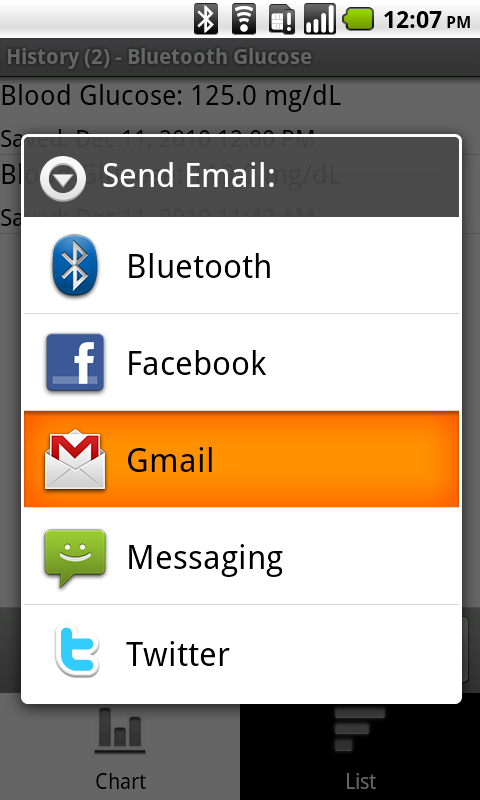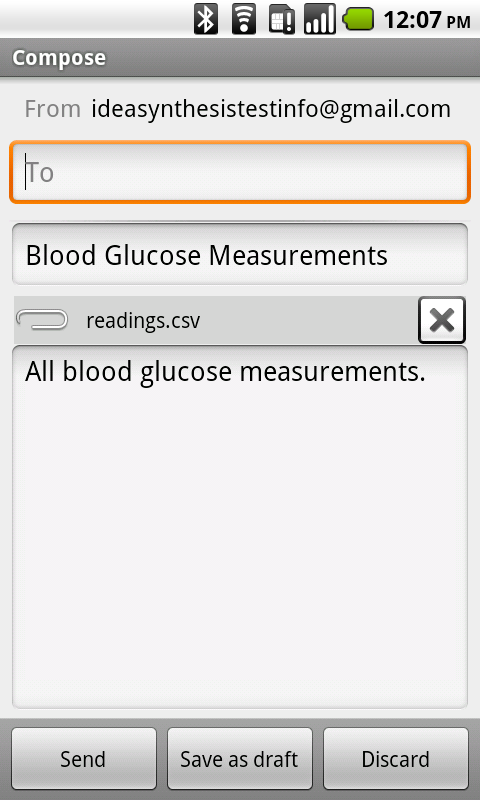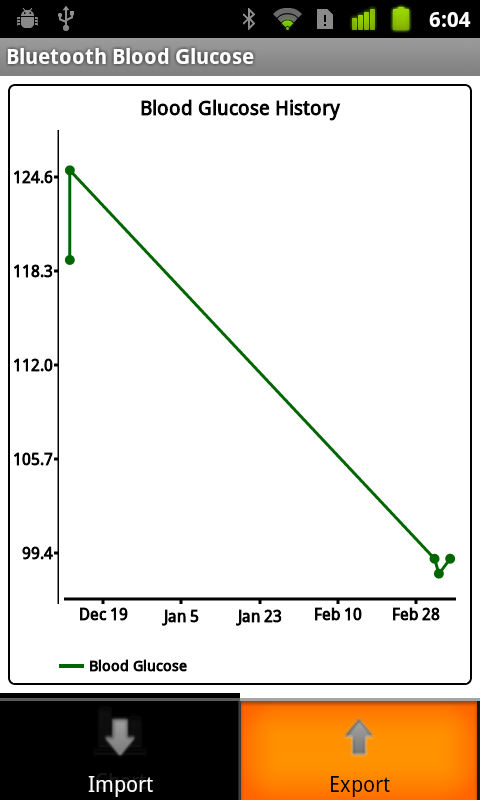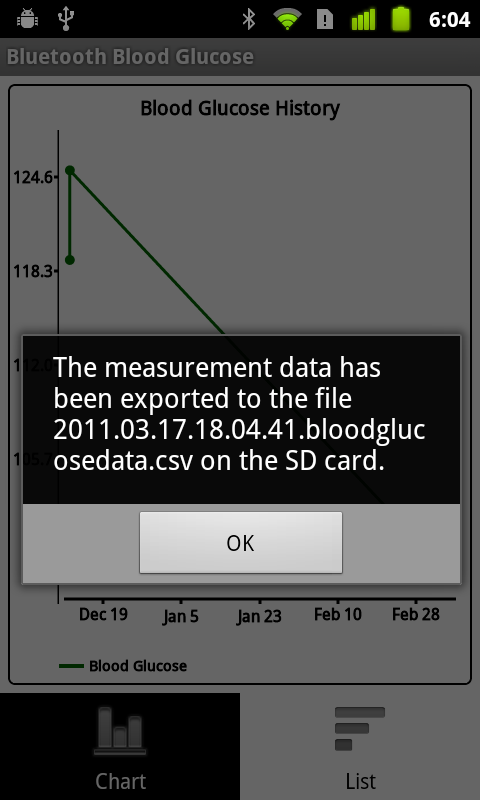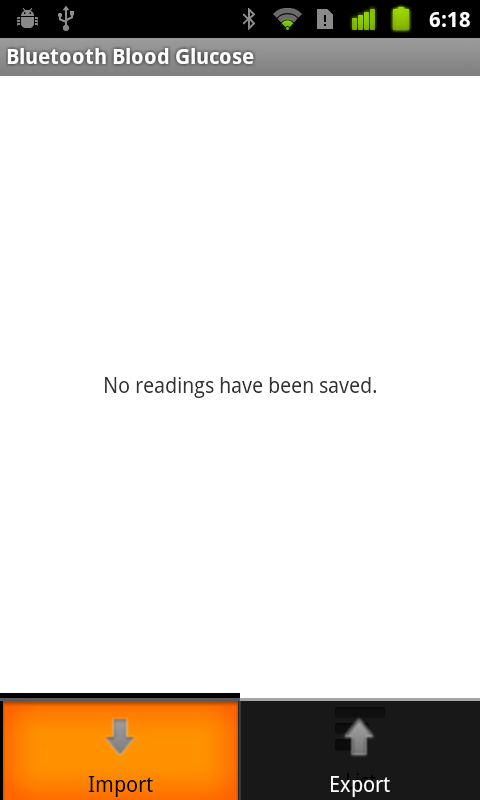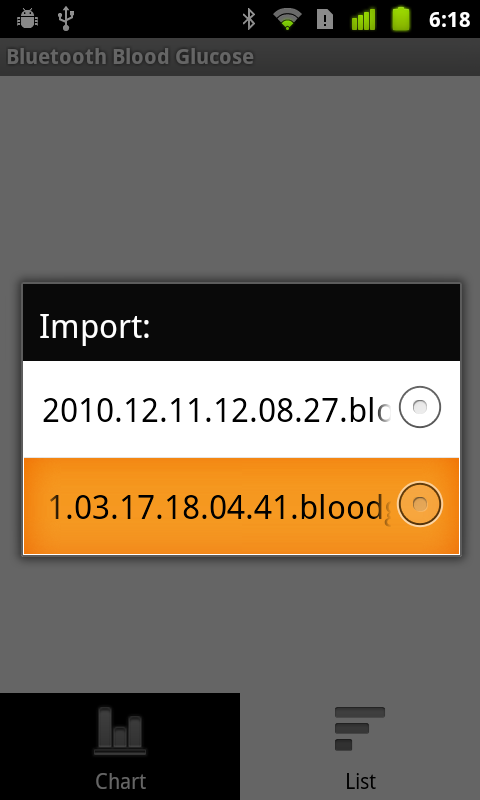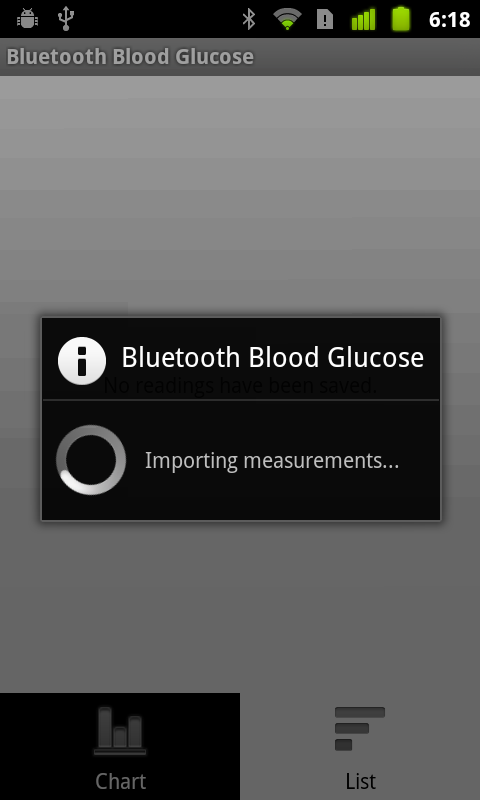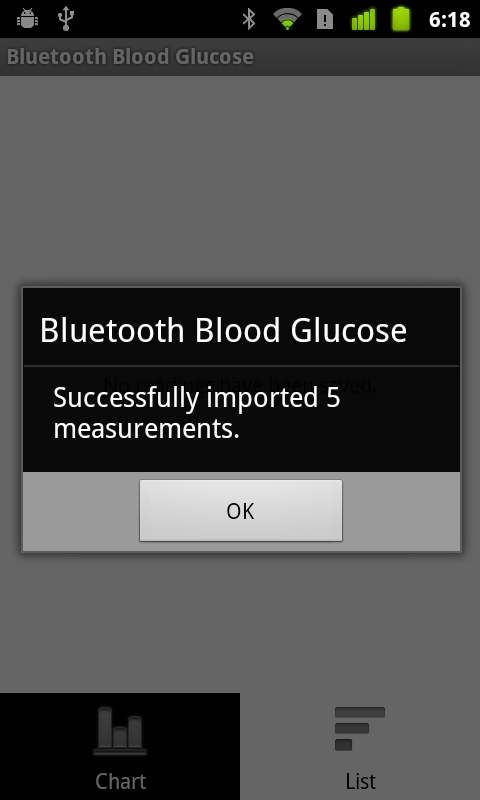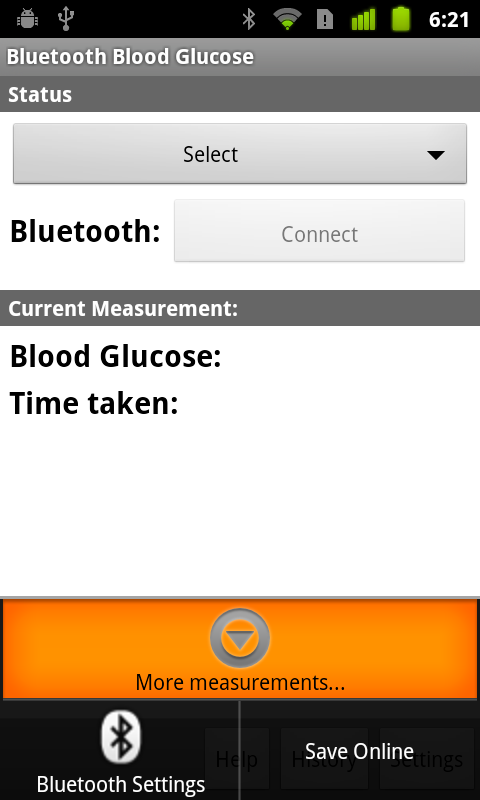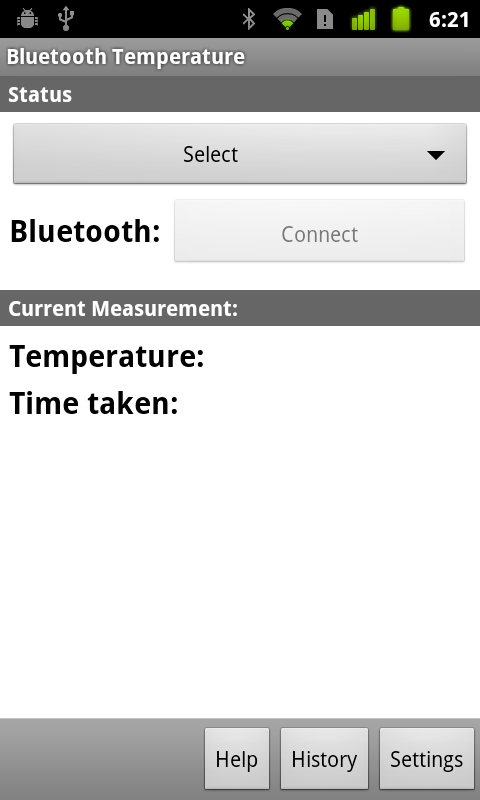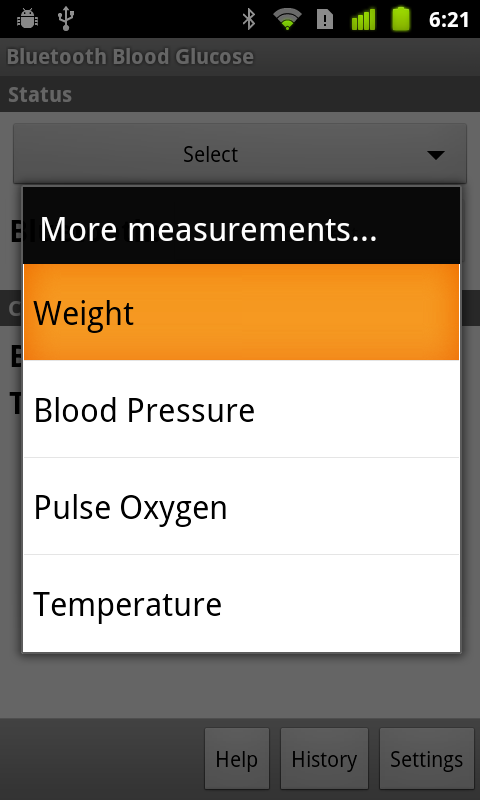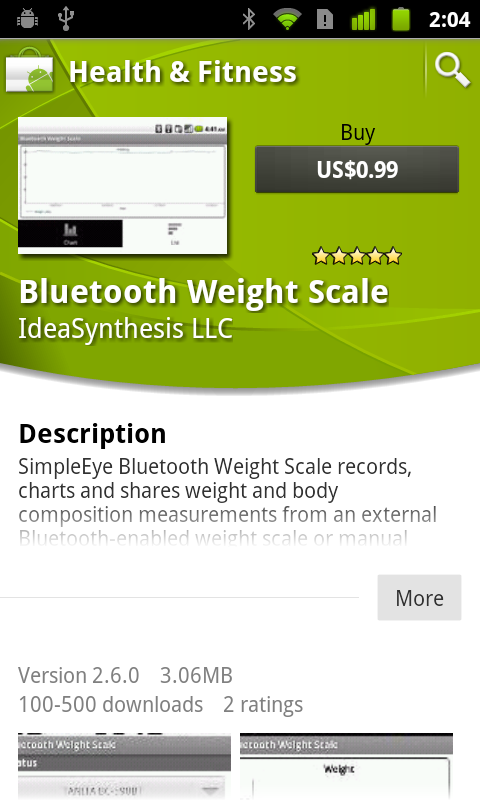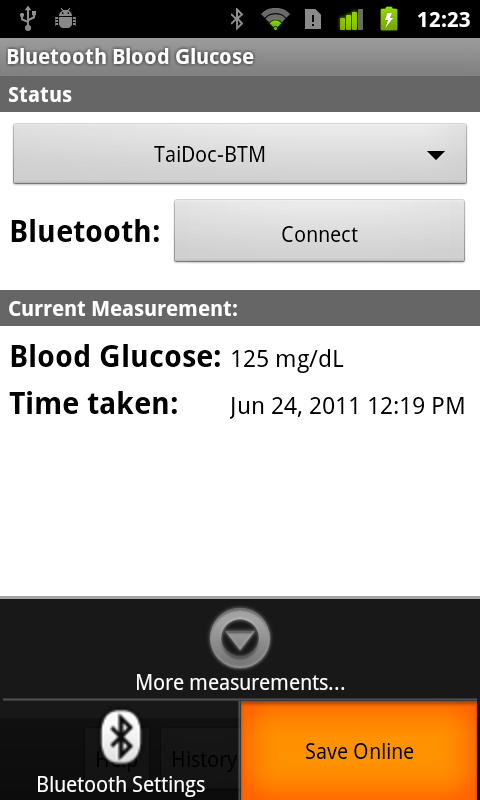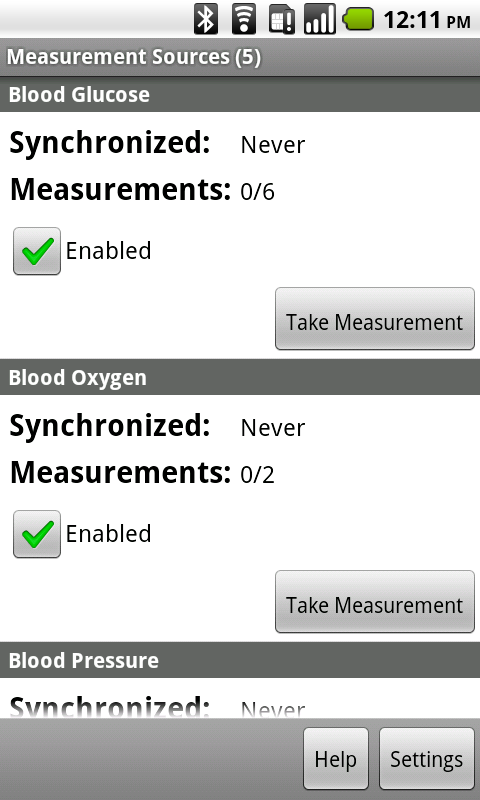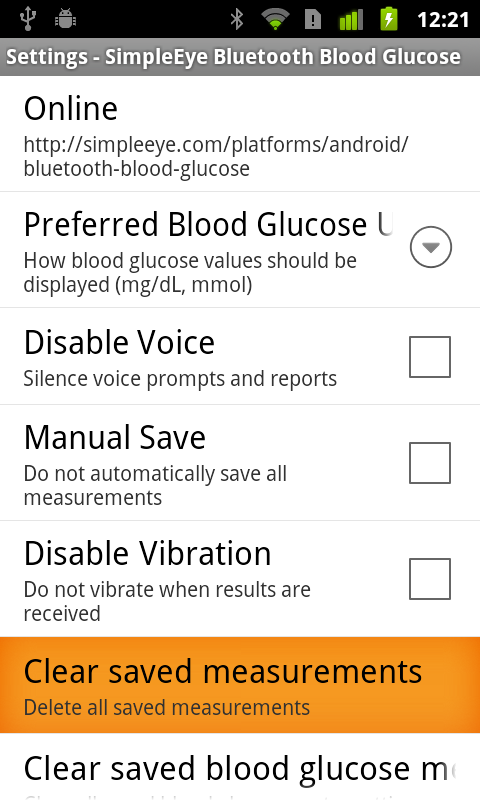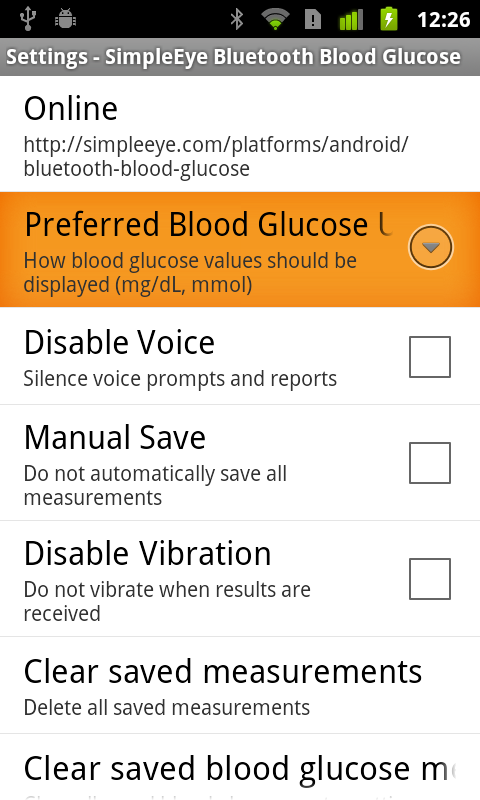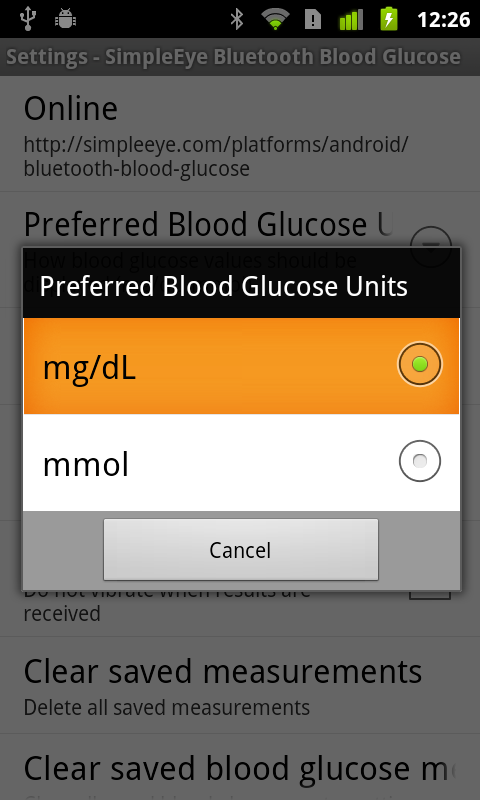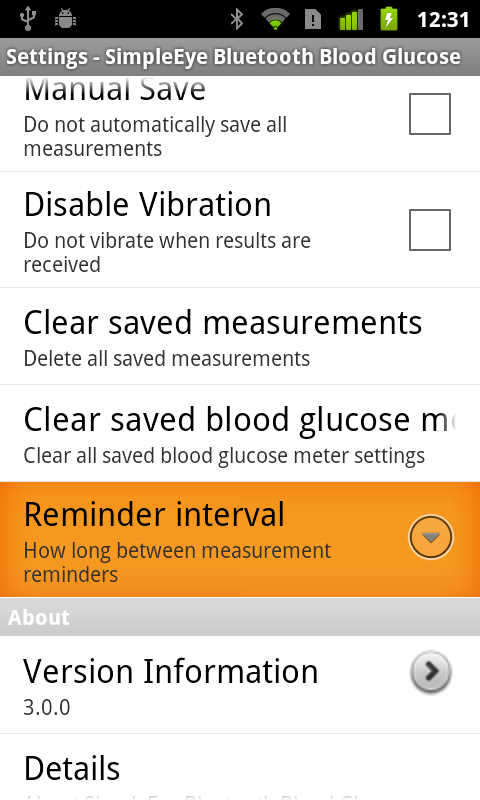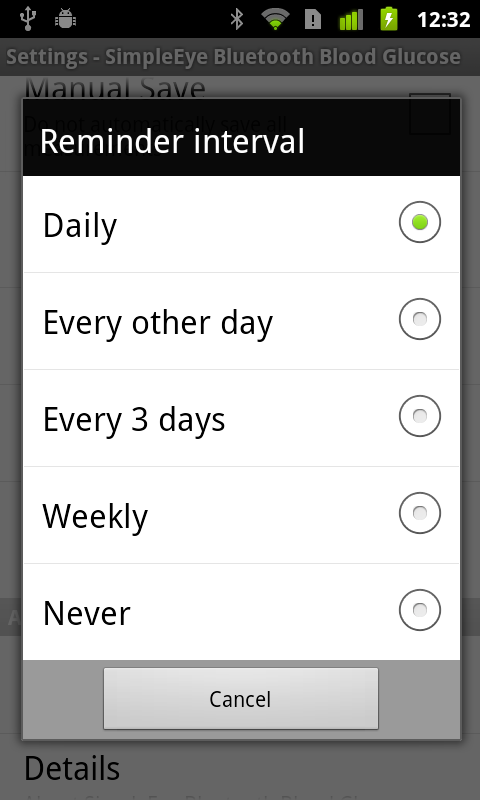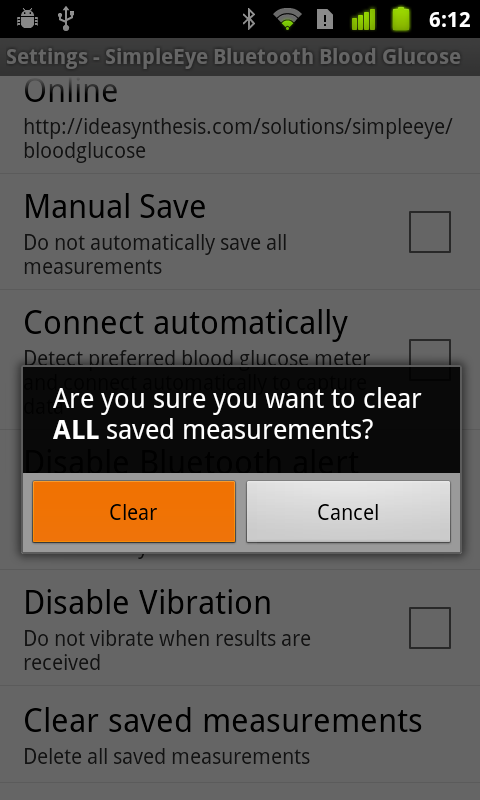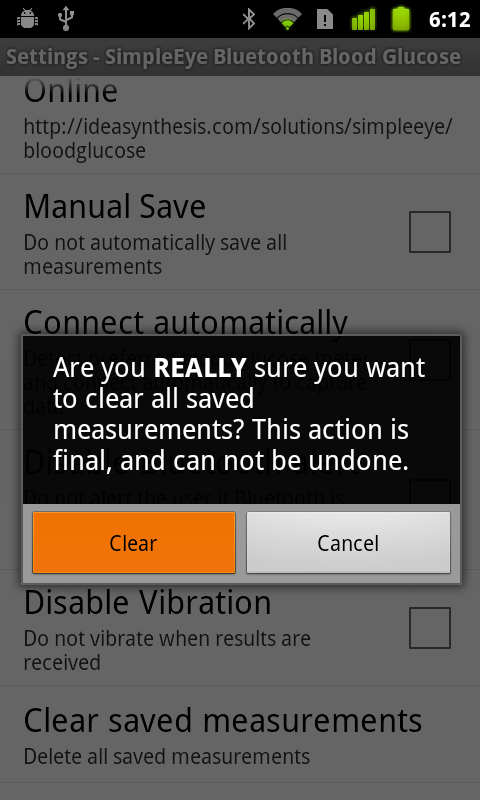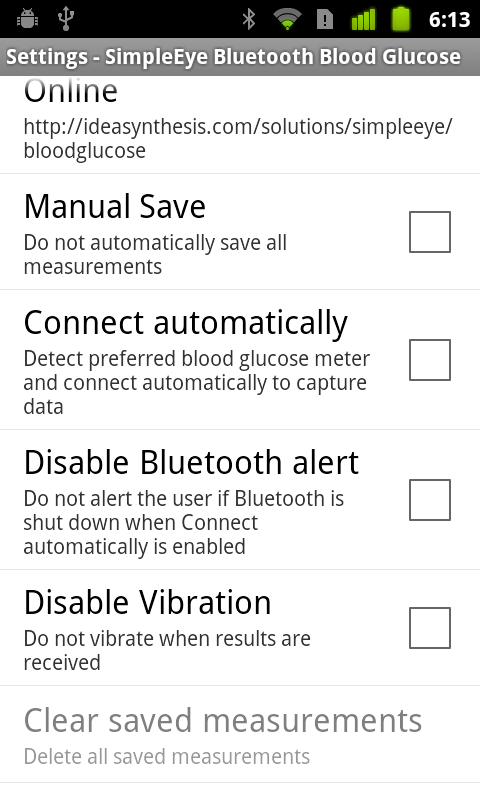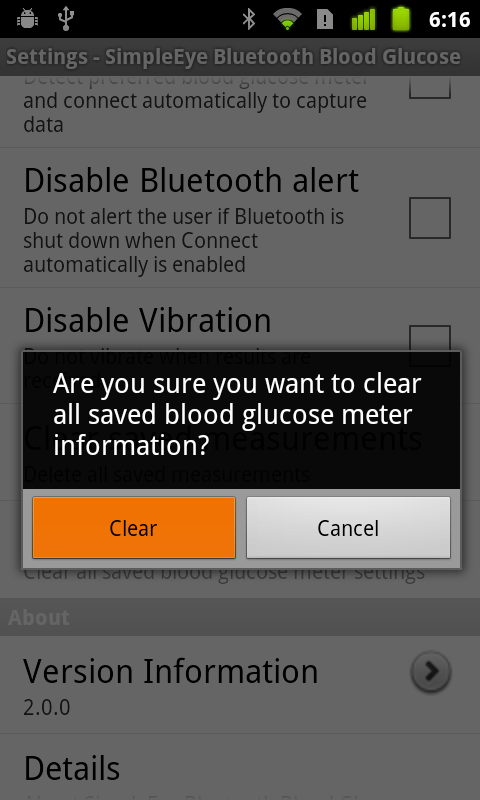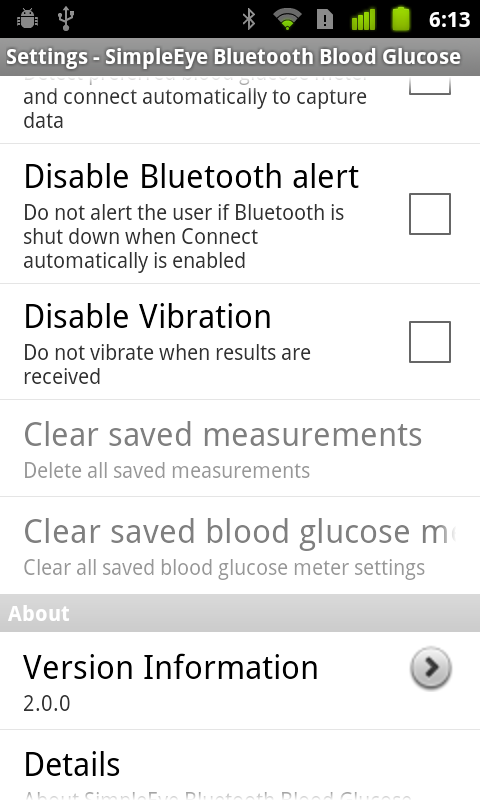- Compatibility
- Setting up the connection between your blood glucose meter and your mobile device.
- Collecting measurements from your blood glucose meter
- Manual measurement entry
- Reviewing historical measurements
- Share measurements
- Measurement data backup and recovery
- Other measurements
- Save measurements to an online health record
- Application settings and information
- Reminders
- Sending Feedback
- Fora D15b Blood Glucose Plus Pressure Monitoring System
Buy:
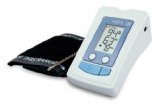
FORA D15b Blood Glucose Plus Pressure Monitoring System on Amazon.com
Android Device Compatibility: SimpleEye Bluetooth Blood Glucose has been tested and verified with Android 2.0 (Motorola® Droid on Verizon®), 2.1 (LG® Ally on Verizon® and T-Mobile® myTouch 3G Slide running HTC® SenseUI) and 2.2 (Google® Nexus One on T-Mobile®). Some minor issues that should not prevent measurements from being taken have been observed with Android 2.1 devices running the HTC® Sense UI: the Bluetooth implementations on these devices have unresolved errors.

If this is the first time the application is started, the help screen will show as in Figure 2 below.

Tap the button to close the help screen: you can tap the button at any time to access this screen.
The application will then check to see if Bluetooth is enabled. If not, it will request that Bluetooth be turned on, as shown in Figure 3 below. Bluetooth must be activated to use the Bluetooth features of the software.

Tap to approve the request: Bluetooth will turn on as shown in Figure 4 below.

Tap the Menu button to show the application menu as seen in Figure 5 below. You can also view the Help file at any time by clicking the Help button.

- Press and hold the Bluetooth button until the screen on the blood glucose meter shows PCL. See the manual for the FORA D15b for more details.
Once the blood glucose meter is ready, tap the Select button and then tap the Find entry as shown in Figure 6 below.

This will open the the Android Bluetooth settings screen as shown in Figure 7 below. A scan will be performed: the phone should now find the blood glucose meter. The caption on the item will show Pair with this device to indicate that the blood glucose meter is not paired.

Tap the blood glucose meter item to start the pairing process: a pairing key dialog will be shown as in Figure 8 below. Enter the proper pairing code (for the supported FORA D15b blood glucose meter that code is 111111).

Tap : the pairing process will complete and the blood glucose meter item will change its caption to “Paired but not connected” to indicate that the pairing process is complete: this is shown in Figure 9 below.

You’re now ready to go!

Tap Yes to accept it: you will then be prompted to set this blood glucose meter as your default blood glucose meter as shown in Figure 11 below. Tap to do so.

The application will enable the Connect button and ask if you wish to connect to the blood glucose meter right now as shown in Figure 12 below.

You can either tap Yes or tap Connect to connect: the connection will start up as shown in Figure 13 below.

Once connected, the select button will be disabled and the Connect button will switch to Disconnect. To disconnect from the blood glucose meter you can tap the button.
As soon as a measurement is available, the blood glucose meter will transmit it and the blood glucose details will be shown as seen in Figure 14 below.

If voice reports are enabled (they are enabled by default) the application will read out the most recent measurement values at this time.
Note: the D15b blood glucose meter can save multiple measurements even when no Bluetooth connection is present: when a connection is then established using SimpleEye Bluetooth Blood Glucose all the measurements will be automatically transmitted to the Android device and saved (see Application settings and preferences for more options) for future review. Only the latest measurement will be displayed on this screen: to see older measurements tap History.
Tap the button to disconnect from the blood glucose meter when the measurements have been captured. The connection will be automatically closed when the blood glucose meter turns off.
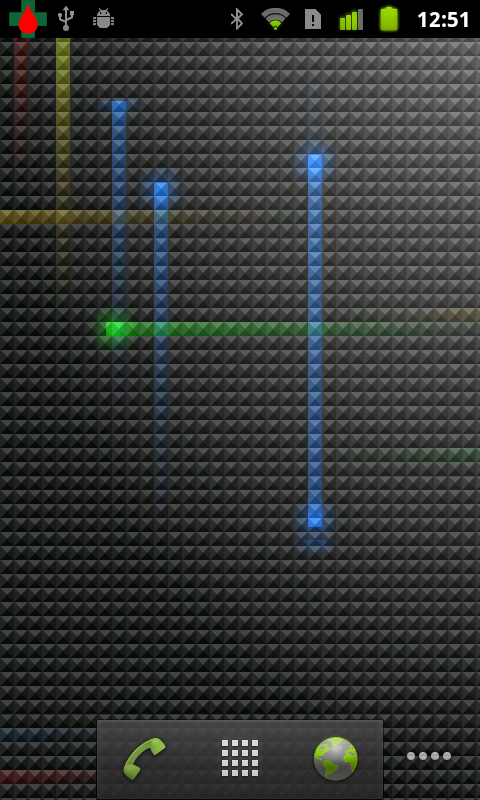
You can then open the notification panel to see the full detail as shown in Figure 62 below. Tapping on the notification will open the application.
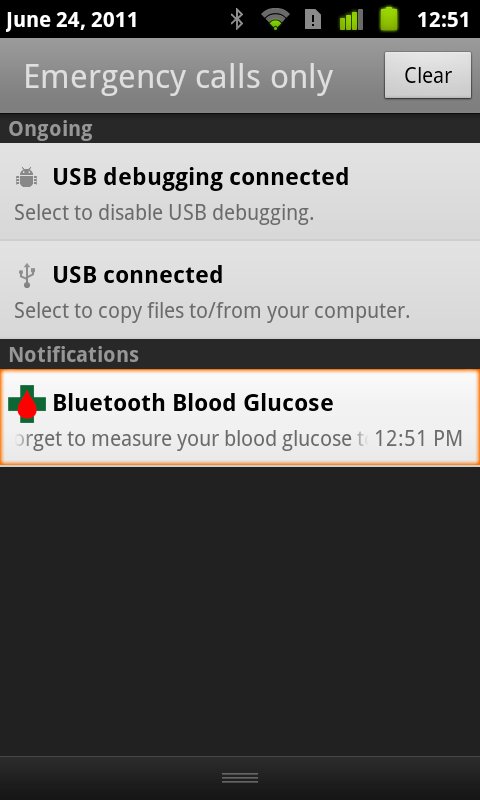
By default notifications are sent if it has been more than 1 day since your last measurement: the reminder interval can be changed as discussed above.
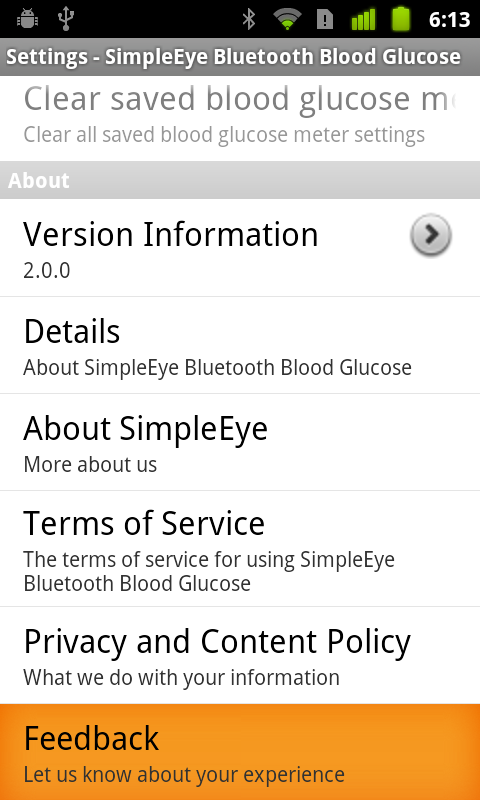
Enter an email address (this is required, so we can get back to you about your requested change) and your comments and press the Submit button as shown in Figure 64 below to send it.
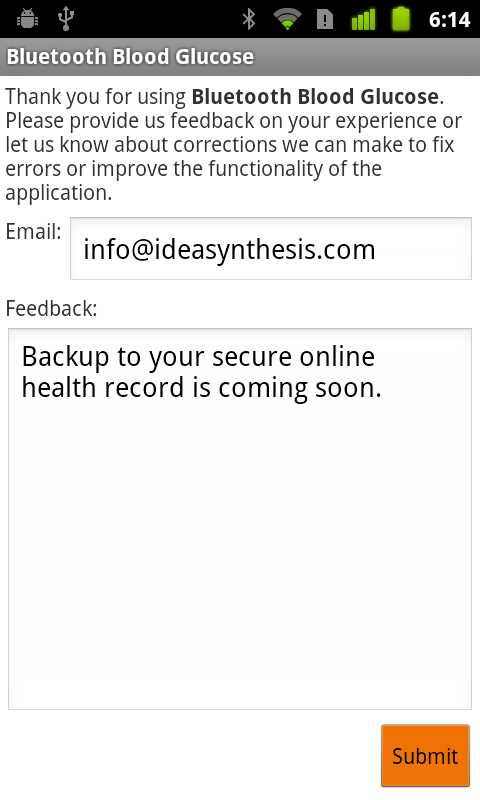
Your submission will be confirmed as shown in Figure 65 below, and that’s it. Thank you!
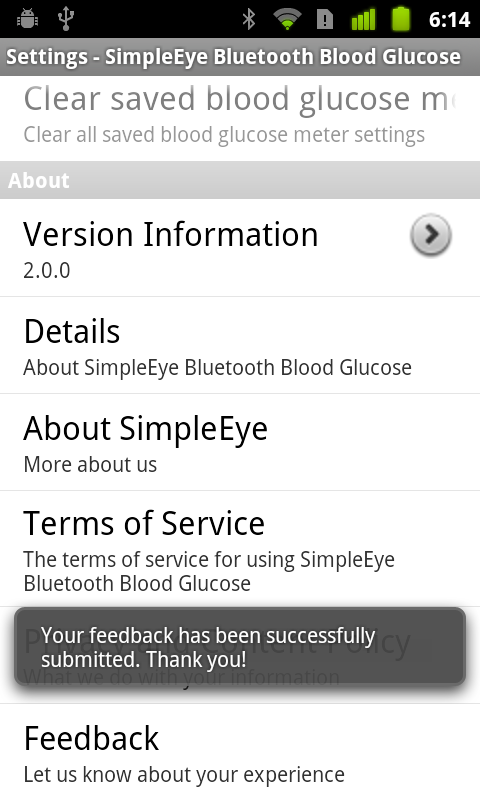









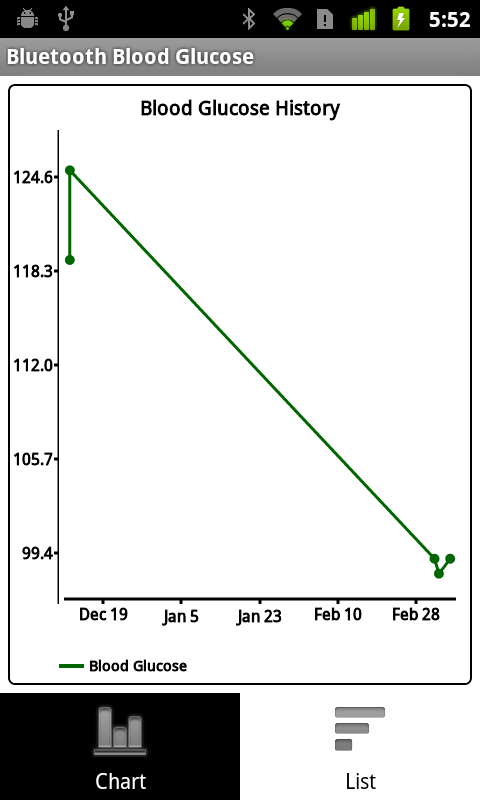
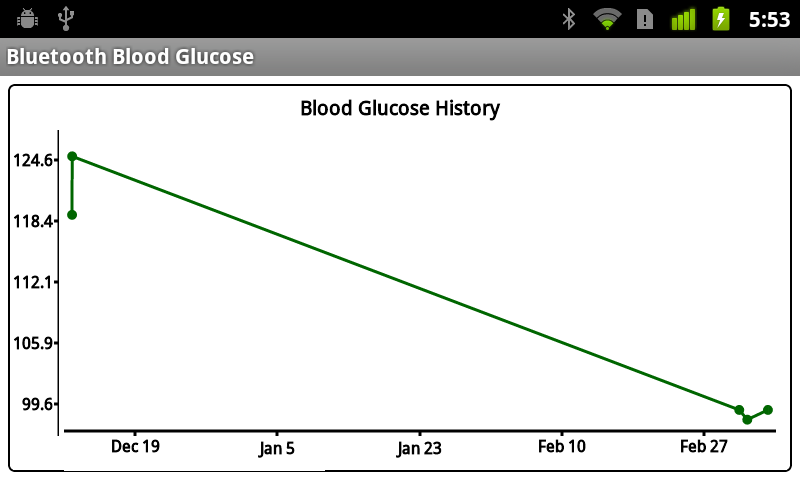
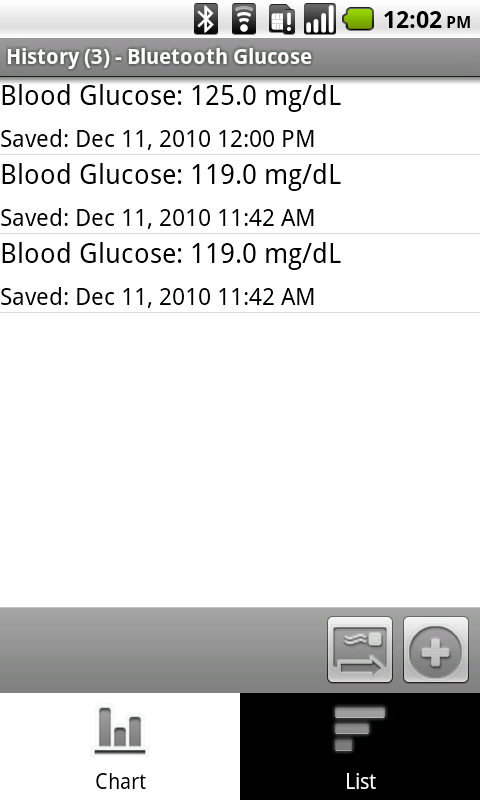

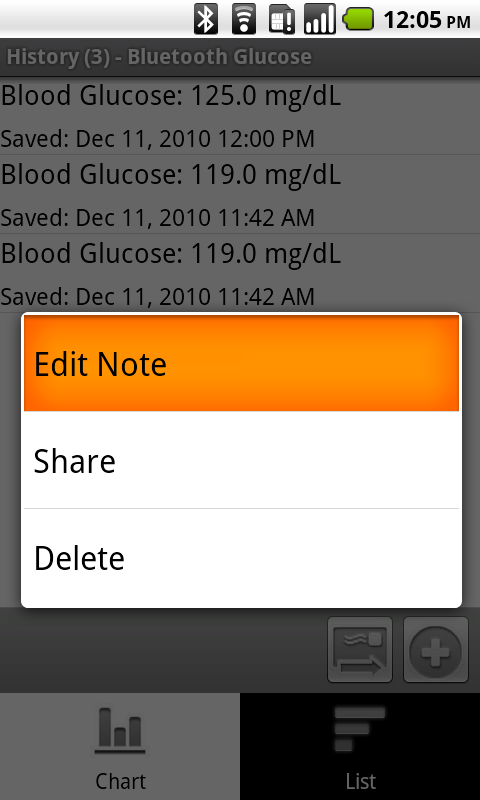
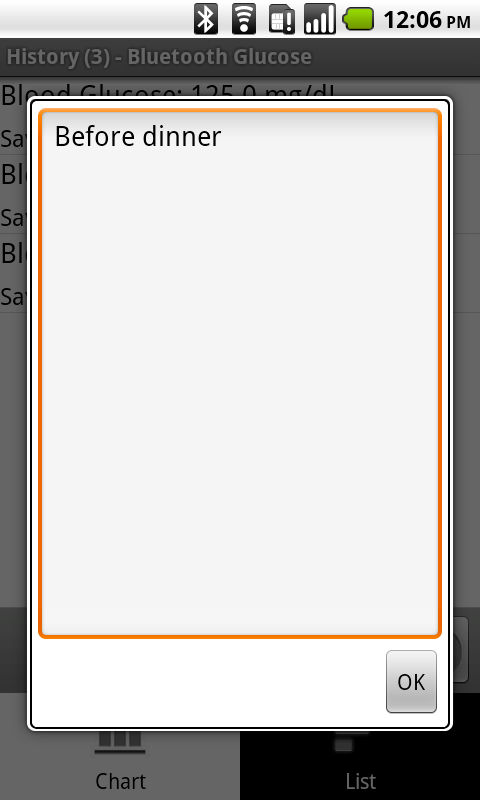
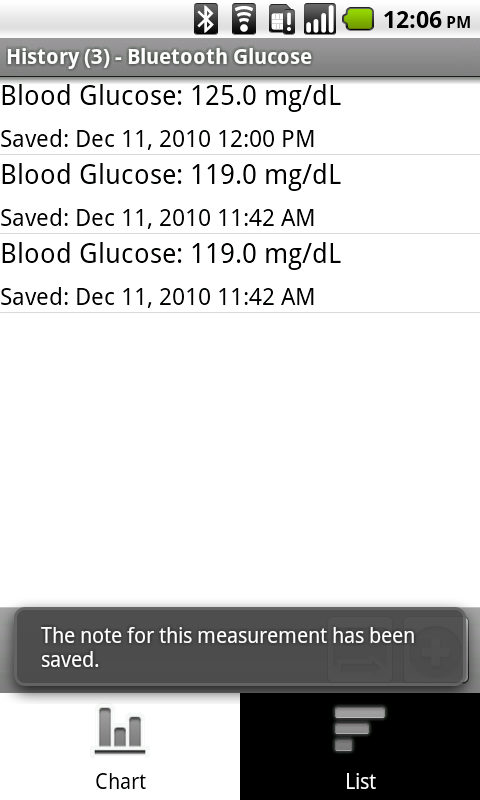
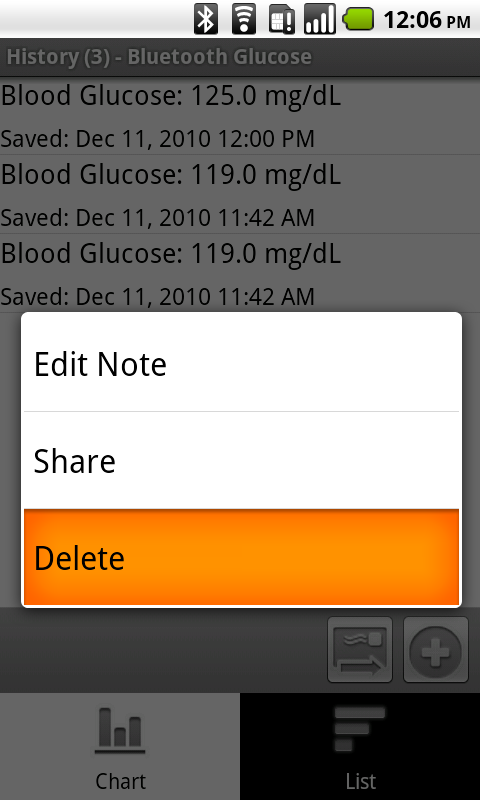
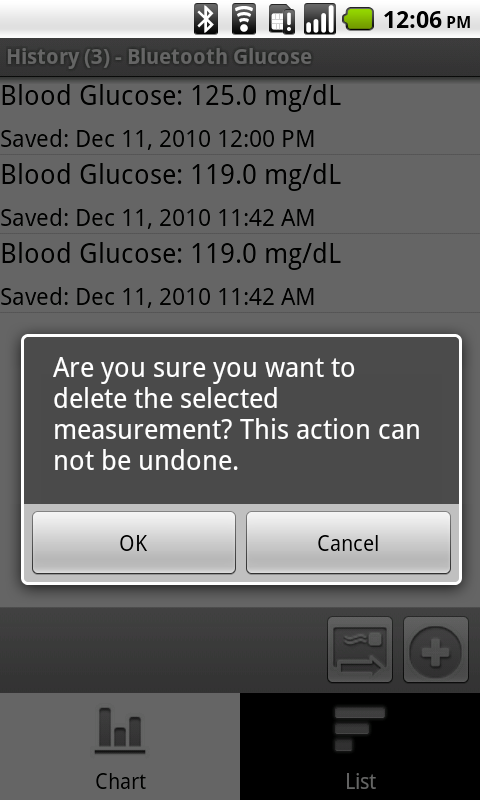
 ) at the bottom of the screen to open up the manual measurement recording screen as shown in Figure 17 above.
) at the bottom of the screen to open up the manual measurement recording screen as shown in Figure 17 above.
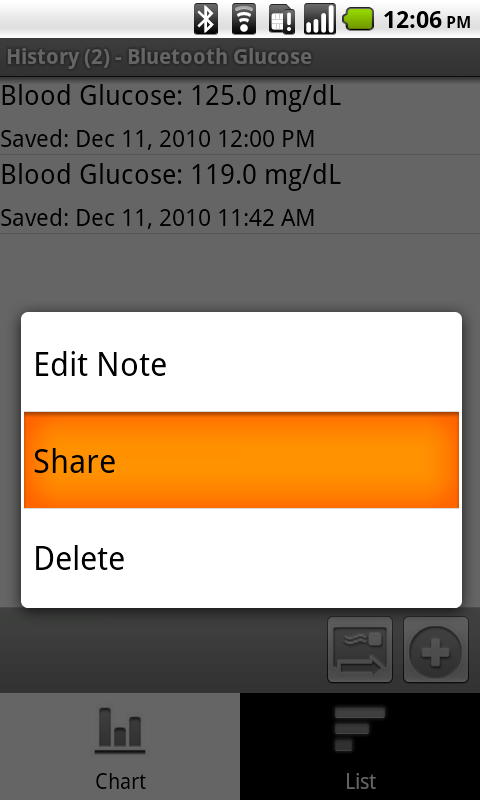
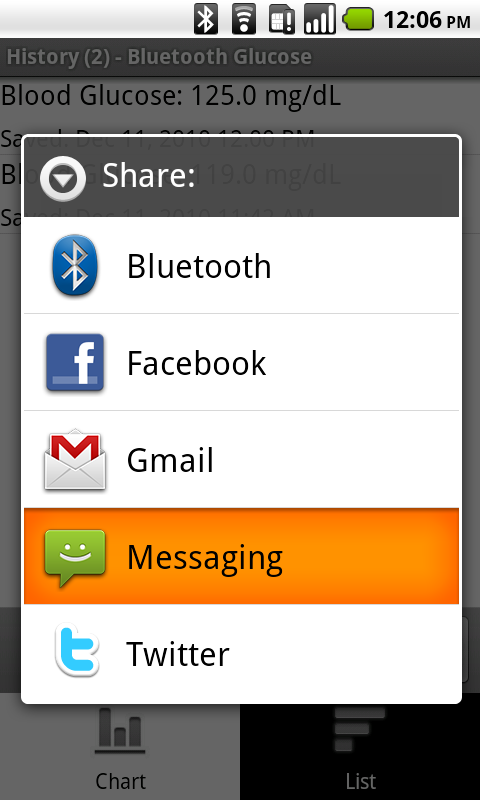
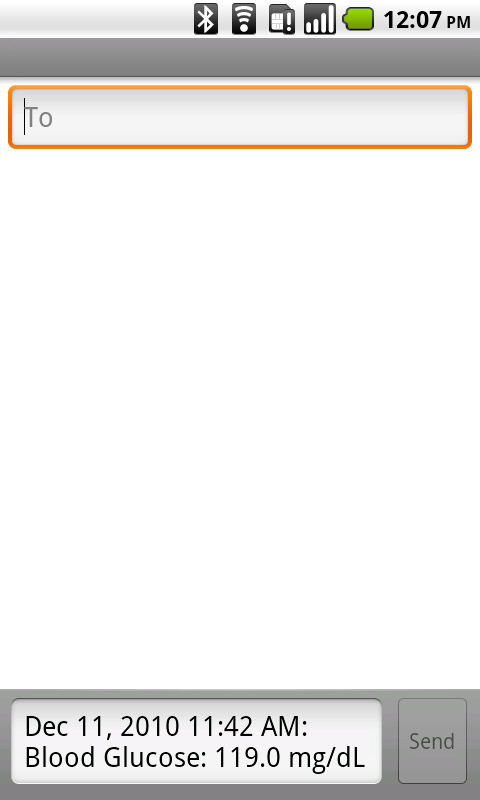
 ) at the bottom of the screen. This will open up the Android share menu as shown in Figure 36 below.
) at the bottom of the screen. This will open up the Android share menu as shown in Figure 36 below.